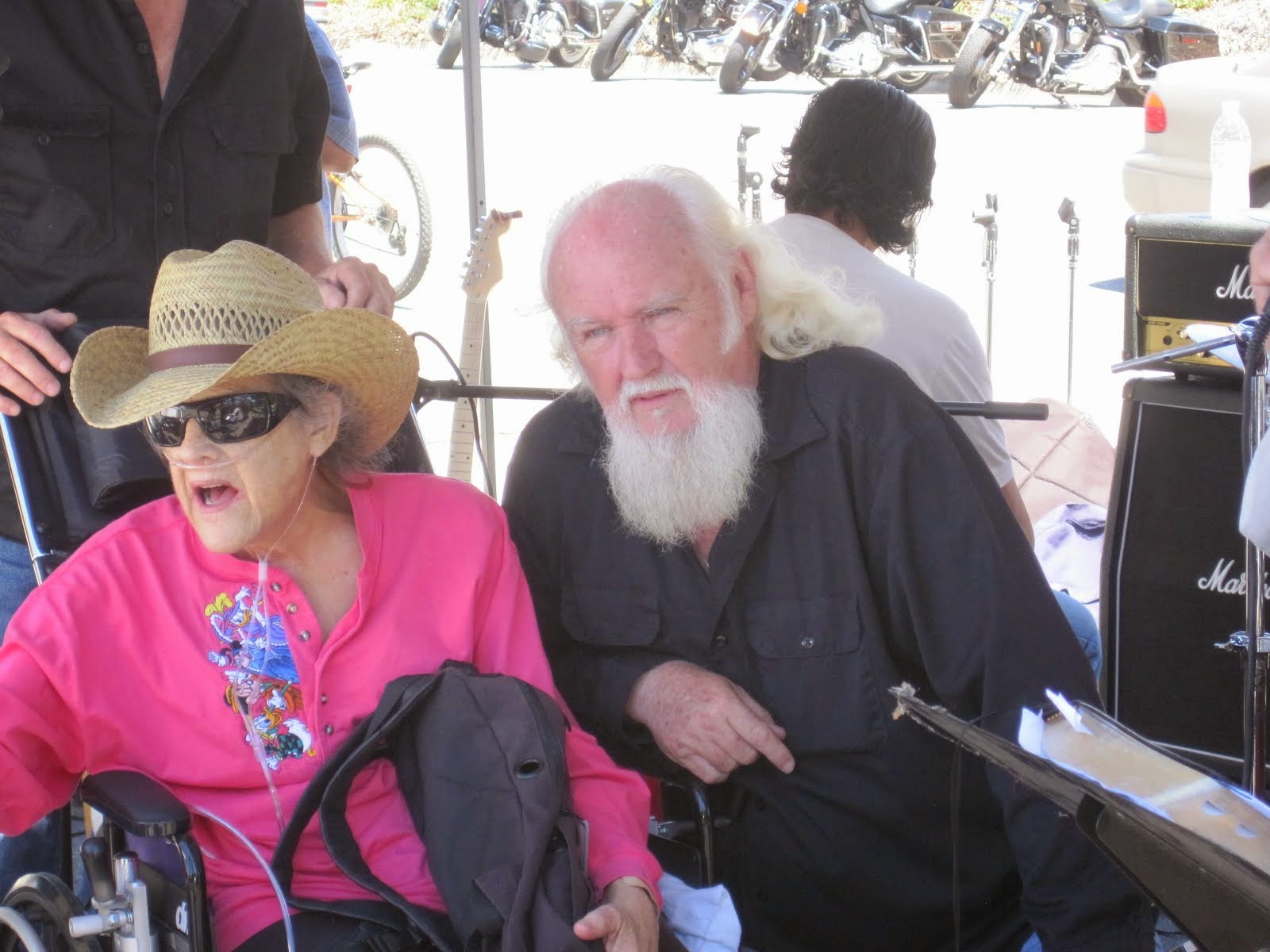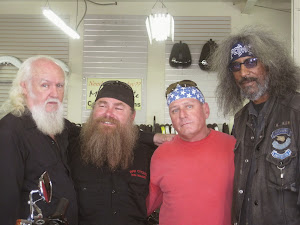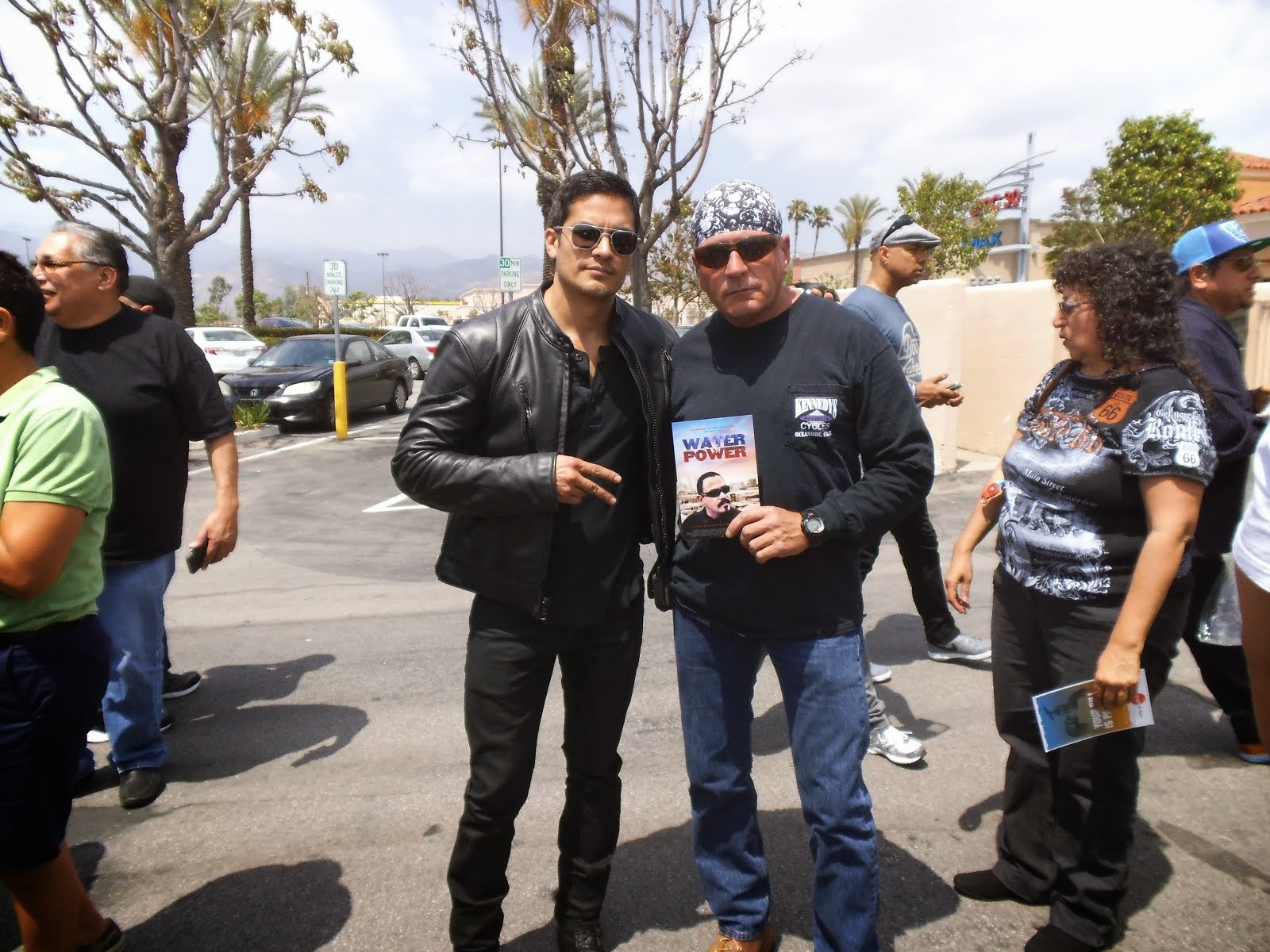OFF THE WIRE
http://www.clutchandchrome.com/news/news/ethanol-too-much-for-motorcycles
Ethanol: How much is too much for motorcycles
Written by Digits
The battle of just how much ethanol ends up in your motorcycle tank took another turn as an advocacy group filed a petition with the Environmental Protection Agency (EPA) over its efforts to increase additive to as much as fifteen percent.
Auto, marine, motorcycle, outdoor power equipment, personal watercraft and snowmobile groups filed a petition EPA to ensure the continued sale and availability of gasoline blends of no greater than 10 percent ethanol (E10) for the 400 million engine products used by tens of millions of people every day in the U.S.
Apparently giving up the fight to stop the increase to fifteen percent all together, the advocacy groups note many products were not designed, built or warranted to run on any fuel containing more than ten percent ethanol. The groups are concerned that retailers are not prepared to offer both E10 and E15 at their stations, and given the choice, may opt to offer E15 only.
“Misfueling is our prime concern, and we foresee that consumers will be forced to fuel with E15 unless EPA requires stations to carry both legacy (E10) and new E15 fuels,” said Kris Kiser, speaking on behalf of the organizations. “Many stations may not be equipped to accommodate an additional fuel, leading them to choose between E15 and E10 fuels – and E15 will likely win out since it may be more profitable for them to carry. This means consumers might have no choice but to fuel with E15, and there will be little to prevent them from misfueling when they come in with a lawnmower, chainsaw, motorcycle, snowmobile, boat or older car.”
The organizations point out that EPA’s prior experience with fuel transitions and misfueling demonstrates that labeling alone is insufficient to prevent misfueling. In 1974, as EPA led the transition to unleaded fuels, the Agency reported a misfueling rate of 15 percent over ten years after the introduction of unleaded gasoline.
The petition for rulemaking, filed with the U.S. EPA, says that with a partial waiver ruling, EPA cannot assure E10 fuel will be available for legacy fleet, and therefore, the petitioners request that EPA, consistent with prior precedent, ensure continued consumer choice by requiring the continued sale of gasoline blends of no greater than E10 fuel.
The petition says that EPA must assure continued availability of E10 for three specific reasons.
There is a strong potential that the reduced volume of E10 fuel required in the marketplace might result in the elimination of supply, further eroding the availability of a fuel needed for millions of off-road, small engine equipment,
EPA must create legal obligations that ensure that the conditions on which the waivers were based can be fulfilled, and
EPA has enough evidence that emission control devices would be significantly “impaired” by E15 to support a requirement for E10.
The fight over increasing ethanol in gasoline is one all too familiar to the American Motorcyclist Association (AMA) who has been at odds with EPA’s move to allow a higher volume.
“The AMA supports the use of cleaner-burning fuels, but we are concerned that gasoline containing more than 10 percent ethanol could result in premature engine damage or failure while a motorcycle is being ridden,” Imre Szauter, AMA government affairs manager said last year, “We’re also concerned about any degradation in performance, fuel economy and rideability that may result from the long-term use of blended fuels with greater than 10 percent ethanol.”
The EPA, in allowing more ethanol in gas, specifically said that its decision covers model year 2007 and newer cars and light trucks, and no other vehicles at this time, including motorcycles.
“Motorcycle manufacturers only certify their machines to run on gasoline or a blend with up to 10 percent ethanol, which is known as E10,” Szauter said. “So using the 15 percent blend in a motorcycle could void the bike’s warranty.”
Growth Energy, an ethanol lobbying group, asked the EPA in March 2009 to allow gasoline to contain up to 15 percent ethanol. It’s part of an effort to meet a congressional mandate to increase to 36 billion gallons the amount of renewable fuel available in the United States by 2022. Ethanol, made from corn and other crops, is considered a renewable fuel.
For more than three years the AMA has been on the record opposing increases in the ethanol level allowed in gasoline until studies show that an increase won’t damage motorcycle or all-terrain vehicle (ATV) engines, and won’t make motorcycles emit more nitrogen oxides than are allowed by the EPA.
“The message we want to deliver today is that once E15 gas is offered for sale, there are a variety of reasons not to put it in your motorcycle or ATV gas tank,” Szauter said. “In fact, the EPA even says you aren’t allowed to put E15 in your bike.”
The EPA said a decision on the use of E15 in model year 2001 to 2006 vehicles will be made after new test results are received. The EPA is also proposing E15 pump labeling requirements so that consumers don’t mistakenly put E15 in the wrong vehicles.
Bob Greco, spokesman for the American Petroleum Institute, told The Wall Street Journal that by approving E15 without full testing, the EPA is putting “politics before science.”
“You’re going to have fuels in the marketplace that could damage engines and void warranties,” Greco told the newspaper.
skip to main |
skip to sidebar




Bill & Annie

Art Hall & Rusty


NUFF SAID.......


































































OOHRAH

ONCE A MARINE,ALWAYS A MARINE

GIVING BACK


MOUNT SOLEDAD














BIKINI BIKE WASH AT SWEETWATER










FRIENDS





BILL,WILLIE G, PHILIP










GOOD FRIENDS


hanging out

brothers


GOOD FRIENDS

Good Friends

Hanging Out




Bill & Annie
Art Hall & Rusty
Art Hall & Rusty


NUFF SAID.......



















NUFF SAID......



























Mount Soledad




BALBOA NAVAL HOSPITAL
RUSTY DANNY

ANNIE KO PHILIP

PHILIP & ANNIE

OUT & ABOUT

OOHRAH...

OOHRAH
ONCE A MARINE,ALWAYS A MARINE

ONCE A MARINE,ALWAYS A MARINE
American Soldier Network GIVING BACK

GIVING BACK
CATHY & BILL
PHILIP & DANNY & BILL

MOUNT SOLEDAD
bills today
EMILIO & PHILIP
WATER & POWER
WATER & POWER
bootride2013



BIKINI BIKE WASH AT SWEETWATER







ILLUSION OPEN HOUSE

FRIENDS


GOOD FRIENDS



BILL,WILLIE G, PHILIP









GOOD FRIENDS

GOOD FRIENDS
Friends
- http://www.ehlinelaw.com/losangeles-motorcycleaccidentattorneys/
- Scotty westcoast-tbars.com
- Ashby C. Sorensen
- americansoldiernetwork.org
- blogtalkradio.com/hermis-live
- davidlabrava.com
- emiliorivera.com/
- http://kandymankustompaint.com
- http://pipelinept.com/
- http://womenmotorcyclist.com
- http://www.ehlinelaw.com
- https://ammo.com/
- SAN DIEGO CUSTOMS
- www.biggshd.com
- www.bighousecrew.net
- www.bikersinformationguide.com
- www.boltofca.org
- www.boltusa.org
- www.espinozasleather.com
- www.illusionmotorcycles.com
- www.kennedyscollateral.com
- www.kennedyscustomcycles.com
- www.listerinsurance.com
- www.sweetwaterharley.com

Hanging out

hanging out
Good Friends

brothers
GOOD FRIENDS

EMILIO & SCREWDRIVER

GOOD FRIENDS
Danny Trejo & Screwdriver

Good Friends
Navigation
Welcome to Bikers of America, Know Your Rights!
“THE BIKERS OF AMERICA, THE PHIL and BILL SHOW”,
A HARDCORE BIKER RIGHTS SHOW THAT HITS LIKE A BORED AND STROKED BIG TWIN!
ON LIVE TUESDAY'S & THURDAY'S AT 6 PM P.S.T.
9 PM E.S.T.
CATCH LIVE AND ARCHIVED SHOWS
FREE OF CHARGE AT...
BlogTalkRadio.com/BikersOfAmerica.
Two ways to listen on Tuesday & Thursday
1. Call in number - (347) 826-7753 ...
Listen live right from your phone!
2. Stream us live on your computer: http://www.blogtalkradio.com/bikersofamerica.
A HARDCORE BIKER RIGHTS SHOW THAT HITS LIKE A BORED AND STROKED BIG TWIN!
ON LIVE TUESDAY'S & THURDAY'S AT 6 PM P.S.T.
9 PM E.S.T.
CATCH LIVE AND ARCHIVED SHOWS
FREE OF CHARGE AT...
BlogTalkRadio.com/BikersOfAmerica.
Two ways to listen on Tuesday & Thursday
1. Call in number - (347) 826-7753 ...
Listen live right from your phone!
2. Stream us live on your computer: http://www.blogtalkradio.com/bikersofamerica.
Good Times
Hanging Out

Key Words
- about (3)
- contact (1)
- TENNESSEE AND THUNDER ON THE MOUNTAIN (1)
- thinking (1)
- upcoming shows (2)
Blog Archive
-
▼
2011
(5448)
-
▼
March
(461)
- CA GOP Saves Eminent Domain!
- Australia - Heavy escort: Rebels ride into capital
- Australia - Charges dropped over bikies fight
- Canada - MONTREAL - 19 Angels still on the lam
- California - Mongols rapist asks for new lawyer; s...
- Virginia - Law Lets Bikes Run Red Lights
- 5th Annual PFC Brian Moquin Memorial Ride-Benefit
- CA Ralley - FREEDOM & MOTORCYCLE AWARENESS RALLY
- Astralia - Alleged high-ranking bikie charged
- To: All City Mayors, and All Motorcycle and Scoote...
- Australia - Rock Machine defector beaten over his ...
- Group pays the price for motorcycle noise drama in...
- Attika7, Check out, OUR FRIENDS OF THE SHOW
- Australia - ‘Notorious’ OMCG firearms seized – Str...
- Australia - Bikie 'shot while eating KFC' at Reb...
- Murrieta, CA - VIDEOS: Pass Assemblyman Tells Viet...
- Arizona - Arizona border agents, weapons and oil
- Denmark - Trial against 16 Hells Angels opens today
- Maryland: Wearing illegal helmets will have conseq...
- Texas - Bikers' battle: Motorcycle club revs up pl...
- New street report from San Diego
- We're trying to enact a similar law here in MA!
- Australia - Police target Rebels memorial ride – C...
- Group pays the price for motorcycle noise drama in...
- TENNESSEE: Second Harvest of Middle TN. & Feeding ...
- BOLT of MA press release, Massachusetts Motorcycli...
- San Diego,Ca - Local 6 "E-MAIL BLAST" APRIL 2011
- Proud to say this is one of our new Congressmen! ...
- Breaking News - Man arrested in Carlsbad homicide...
- Rest In Peace Kimmy Chapman
- Friends Remember Man Killed in Carlsbad
- Head to Tail - Sizes?
- Motorcycle Journalist Kimmy Chapman Killed In Moto...
- Canada - Court appearance for third man charged af...
- Australia - High-ranking ‘Nomads’ OMCG member char...
- Nevada Helemt Law
- Veteran to Veteran
- Greenwood, SC - Bikers Hit the Road for Babies
- NC Bill Clarifies Roadblocks Illegal..........
- ALEXANDRIA, Va. - Army Wife Says Pentagon Bungled ...
- More Reality Cop Show Shenanigans....
- Australia - Firearms seized at St Marys in motorcy...
- Astralia - Tattooist dies after suspected bikie ga...
- Harley club has spent 25 years helping community..
- Australia - Bikie war could be cataclysmic: police
- REDUCE PROFILING - SUPPORT HOUSE BILL 381
- Get ready: Countdown to AMA Get Out and Ride! Month
- Real News...........
- THINK THIS GUY HAS IT ALL COVERED. I COULDN'T SPOT...
- Profiling: Unfair to motorcyclists
- Ban the American Flag?? Are they kidding????
- US airstrikes open door for Libyan rebels to retak...
- Arizona - Melbourne man on US firearms charge
- Cell phone users are being tracked every 7 seconds
- Canada - Winnipeg police worried a biker gang turf...
- Australia - Police fear Bandidos planning to set u...
- Oklahoma - Bixby turns other cheek; sends strong m...
- Australia - No police to control bikies...
- Canada - Man with alleged biker ties granted bail,...
- California - Assembly Bill 1047 Motorcycle ONLY Ch...
- Austria - Priest sinned in petrol station clash, c...
- New York - Residents Arrested in Gang Sting
- Seattle, WA - Seven BC men sentenced for marijuana...
- The Few. The Proud.
- CARLSBAD: Friend says victim was stabbed without p...
- Texas - First-time ride raises nearly $30,000 for ...
- Ethanol: How much is too much for motorcycles
- Canada - Man charged in police-involved shooting
- California - Convicted felon charged with having m...
- Canada - Shooting incident suspect gives up, Cop ...
- LPR Device, Here is what is happening now..
- Santa Ana, CA - O.C. responds to disabled vet who ...
- Sons of Anarchy actors ride with troops to promote...
- NY Attorney challenges MC only checkpoints
- SALT LAKE CITY - Shot to Death for Nothing, Family...
- PORTLAND, Maine - Chretien Gets 8 Months In Feder...
- Australia - Police seize high-powered weapons in R...
- PLEASE DON'T FORGET NEXT SATURDAY! Tell everyone y...
- Maine Lawmakers Take up Bill to Crack Down on Nois...
- Santa Cruz, CA - Bikers and Celebrity Chef Join Fo...
- Amsterdam - Life sentence demanded for Hells Angels
- Connecticut - Thousands of 'Angels' may roll into ...
- Australia - Ulysses declare war on Corbett
- Connecticut - Suspected motorcycle gang members he...
- Australia - Witness insults barrister in trial
- Australia - Police blitz nets loaded weapons
- SHEEP IN WOLVES CLOTHING...
- Australia - Bikie VP charged with drugs after St M...
- NH: Harley dealer wants group to repay $8000 court...
- Australia - Police raid bikie gang houses all over...
- U.S. Health Authorities Urge Americans Not To Take...
- Australia - Attempted murder charge over bikie sh...
- Australia - Channel Ten to make bikie massacre min...
- USA - Westboro piety will have to wait..
- Australia - WA bikie war could escalate - Police
- Australia - Clearing the way at Coffin Cheaters HQ
- SAN MARCOS, Texas - FBI Snitch Claims NY Times Def...
- Michigan Helmet Bill
- Former Outlaw gets 15 years
- even a pink 38 will kill you, Armed Beauty Queen F...
-
▼
March
(461)
Bikers of America, Know Your Rights!... Brought to you by Phil and Bill
Philip, a.k.a Screwdriver, is a proud member of Bikers of Lesser Tolerance, and the Left Coast Rep
of B.A.D (Bikers Against Discrimination) along with Bill is a biker rights activist and also a B.A.D Rep, as well, owner of Kennedy's Custom Cycles
